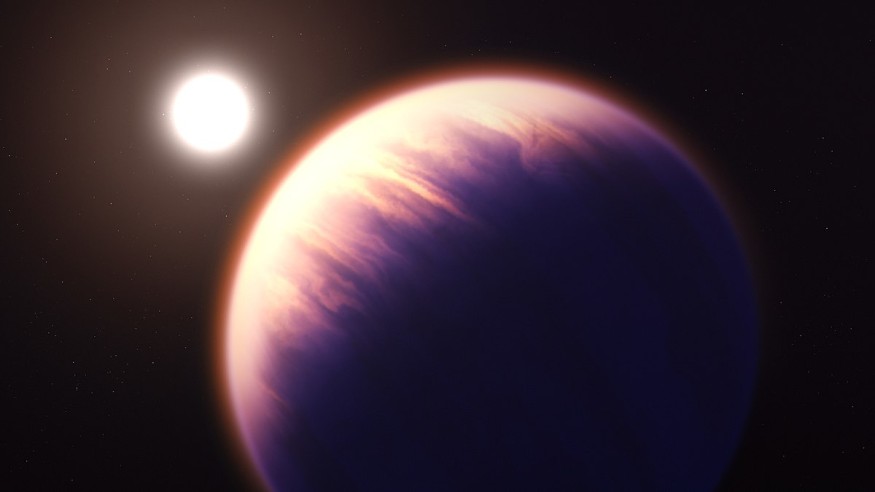A few months ago, NASA's James Webb Space Telescope (JWST) discovered the first convincing evidence of carbon dioxide in an exoplanet's atmosphere. The gas giant WASP-39b is an exoplanet that is 700 light-years from Earth and is turning out to be quite the exoplanetary treasure.
An in-depth analysis of the data from the JWST gives a landmine of information that allows scientists to glimpse the most detailed look of an exoplanet atmosphere for the first time.

Another First From JWST: The Most Detailed Photo of an Exoplanet Atmosphere
NASA Exoplanet Exploration team announced JWST's new milestone as it scored another first: getting a molecular and chemical profile of an exoplanet atmosphere. The new readings from JWST provide a full menu of the atoms, molecules, active chemical processes, and clouds of the exoplanet.
The latest data gave a hint of how WASP-39b's clouds might look up close, which scientists predict to be broken up rather than a single, uniform blanket that covers the exoplanet. JWST's array of highly sensitive instruments was trained on the atmosphere WASP-39b, which is considered to be a "hot Saturn" that orbits tighter than Mercury around its star.
Moreover, it is the first-ever direct detection of photochemistry in an exoplanet atmosphere with a nearly complete inventory of its chemical contents, revealing tantalizing hints of its formation history. According to Science Alert, these findings were published in five papers in the journal Nature and the team hopes it would pave the way for discovering signatures of life outside the Solar System.
"These early observations are a harbinger of more amazing science to come with JWST," Max Planck Institute for Astronomy director astrophysicist Laura Kreidberg said.
JWST is the most powerful space telescope ever launched. Three of its four instruments obtained the detailed infrared spectra of the star WASP-39 and scientists analyzed the colorful codes.
They identified the molecules present in WASP-39b's atmosphere and found that it has carbon dioxide, water vapor, sodium, and carbon monoxide. But they did not detect methane in its atmosphere, implying that it is more metallic than Earth's atmosphere. More so, the ratio of these elements reveals that the planet likely formed farther from its host star than its current close-in position.
Sulfur Dioxide on Wasp-39b
As Science Alert reported, the observations also revealed that its atmosphere has sulfur dioxide, which is commonly seen in rocky worlds in the Solar System with a history of volcanic activity. But sulfur dioxide on gas giants is produced when hydrogen sulfide is broken down by light into pieces that resulted in sulfur being oxidized.
Photochemistry or photon-induced chemical reactions have implications for habitability, stability of the atmosphere, and formation of aerosols. However, scientists clarify that WASP-39b is not likely to be habitable due to many reasons, like its scorching temperature, and gaseous makeup.
On the other hand, the detection of photochemistry has implications for atmospheric studies of exoplanets and understanding the evolution of WASP-39b. The team said that they might not be able to detect signatures of life on the exoplanet with JWST, perhaps a more powerful telescope in the future could explore it further and deliver that level of detail.
RELATED ARTICLE: Exoplanet 700-Light Years Away Contains Carbon Dioxide Found By James Webb Space Telescope
Check out more news and information on Exoplanets in Science Times.
© 2025 ScienceTimes.com All rights reserved. Do not reproduce without permission. The window to the world of Science Times.










